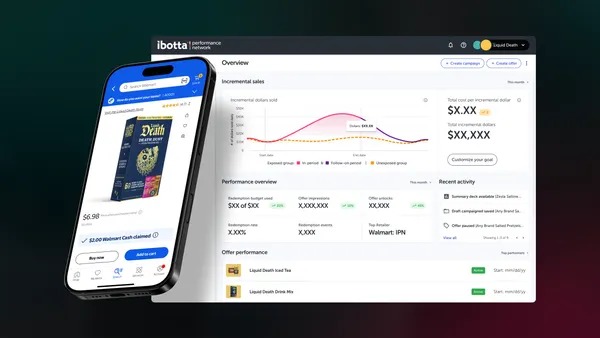Brief:
-
Nine out of 10 retailers are boosting investment in mobile or social media advertising this year even as they harbor reservations about tracking ROI, according to a survey sponsored by digital couponing firm RetailMeNot. One-fourth of retailers are unable to tie their mobile marketing to in-store sales, the survey found.
-
More than half of retailers, 56%, are sharing mobile unique promotion codes or mobile single-use promotion codes to customers through their own apps or ones from marketing partners. More than 80% of retailers that used partner platforms to issue mobile promotions this year said they received above-average ROI, up from 66% in 2016.
-
Kelton Global conducted the survey in April among 200 marketing decision-makers who work at organizations that sell products online and at brick-and-mortar stores.
Insight:
While product research and purchasing are growing online, RetailMeNot’s survey found retailers are frustrated with the uncertainty of the effectiveness of mobile marketing. The numbers point to the need for retailers to continue to experiment online and on mobile to find the best tactics for reaching younger consumers, especially during key shopping periods like back-to-school. As Gen Z prepares to head to college, back-to-school shopping is trending toward young millennial parents and Gen Z students, making mobile and social media increasingly important.
Online shopping tends to be more popular among younger adults who are more likely to use smartphones or social media, according to Pew Research. About 90% of 18- to 29-year-olds buy items online, while 77% have purchased something using their cellphones and 24% have bought something by following a link on social media. Meanwhile, about 60% of those 65 and older ever generally make online purchases — but only 17% have bought something using their cellphones and just 5% have done so through a social media link.
As headlines scream that Amazon is killing department stories and shopping malls, brick-and-mortar retailers are still the most important segment of the consumer market. Only 10% to 15% of U.S. adults make online purchases at least once a week, according to a study by the Pew Research Center. Most people still go to stores to get questions answered and to purchase products that are right in front of them.
More broadly, online and physical retail continue to converge. Amazon wants to expand into brick-and-mortar retail, a desire that is evident in its proposed acquisition of Whole Foods Market. The percentage of people buying groceries online is barely at the 2% mark, according to Tabs Analytics. Less than 5% of adults make at least six online purchases a year. Meanwhile, 78% of adults shop regularly at traditional grocery stores, and 56% shop at Wal-Mart. The survey by Tabs Analytics also showed online shopping grew by 14% compared with only 2% growth for physical stores.













